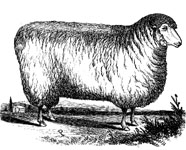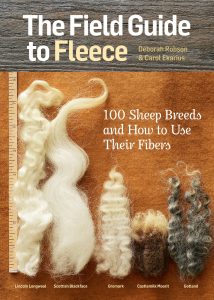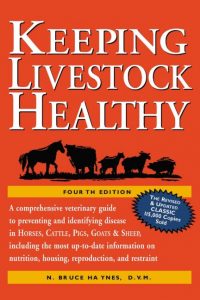
Breed Facts
Status:
Critical
Use:
Wool
Adult Weight:
Rams/Ewes: average 90-150 lbs.
Temperament:
Alert, Docile
Experience Level:
Intermediate
Notes:
Self-sufficient; excellent foragers; prefer browsing over grazing; often kept at Living History Museums
HOG ISLAND SHEEP
Hog Island is a barrier island off the coast of Virginia. Small populations of people and livestock have inhabited Hog Island for hundreds of years. In the 1700’s, a flock of sheep was established on the island using locally available sheep of British origin. The sheep of Hog Island evolved in response to the island’s natural selection for hardiness, foraging ability, and reproductive efficiency. Some introduction of outside blood occurred, but the isolation and natural selection of the habitat has shaped the population into a distinct breed. The sheep numbered in the hundreds on the island at their peak in the early 20th century.
In the 1930s, a string of hurricanes and nor’easters washed across the island, discouraging continued habitation there. By 1945, all Hog Island residents had migrated to the Eastern Shore of Virginia and had taken most of their livestock with them; however, many sheep remained on the island and continued to thrive as they had for centuries. The annual shearing and notching in the spring was generally the only contact between the owners and their sheep. The sheep roamed freely upon their “floating” pasture, consuming the marsh grass at will and drinking fresh water from small pools that had been dug ankle-deep into the sandy soil.
In 1974, when the Nature Conservancy purchased the island, the last sheep were removed from Hog Island. Four years later, much to their surprise, Virginia Coast Reserve agents found a thriving flock of sheep on the island – a testament to the extreme hardiness of these animals. The Nature Conservancy removed the last of the sheep in late August 1978, to return them to full domestication. Ten rams and twenty ewes traveled to Virginia Tech for research into the breed’s parasite resistance. The year-long study indicated that the isolation, not resistance, had kept the sheep virtually parasite-free on the island.
Following their stay at the University, the remnant flock found a new home at George Washington’s Birthplace National Monument. Although private breeders maintain some flocks, most Hog Island sheep remain part of the livestock collections at living history museums, including Plymouth Plantation, the Museum of American Frontier Culture, Mount Vernon Estate and Gardens, George Mason’s Gunston Hall, George Washington’s Birthplace, and the National Colonial Farm. Hog Island sheep are a fitting choice as Hog Island sheep resemble and descend from sheep that existed in the New World during and after the colonial period.
Hog Island sheep vary in physical appearance. Most of the sheep are white wooled, though about twenty percent are black. As they have been feral sheep, they have a lot of grease in their wool to protect them from the elements. Newborn lambs frequently have spots on their bodies, but these spots usually disappear as the lambs mature. The face and legs of these sheep can be speckled brown, white, and black, or they can have black faces and legs. Wool from this breed is of medium weight with fleece yields ranging from two to eight pounds. The sheep will naturally shed their wool slowly each year, but most owners choose to shear them to collect wool and create a more even-looking coat on their sheep.
Ewes may be horned or polled. Rams can have horns or are somewhat polled, with only small scurs on their heads in the place of horns. Mature animals weigh between 90-150 lbs. The ewes make excellent mothers and most often give birth to twins. If given the opportunity, Hog Island sheep are excellent foragers and prefer to browse rather than graze. They stay in very tight flocks and are extremely alert. They are also used for their meat which is said to be very mild tasting even into adulthood. They have a sweet temperament, are easy to raise, and are a hardy breed.
Did you know:
The Livestock Conservancy is America’s leading organization working to save over 190 heritage breeds from extinction. We rely on the support of our members, grants, and donations from the public to raise the $1 million needed each year to maintain our conservation work with rare breeds of farm animals. Click here to learn how you can help.
You may be interested in…

Breed Facts
Status:
Critical
Use:
Wool, Living History Museums
Adult Weight:
90 -150 lbs
Temperament:
Alert, Docile
Experience Level:
Intermediate
Unique adaptations:
Self-sufficient, excellent foragers, prefer browsing over grazing
You may be interested in…




